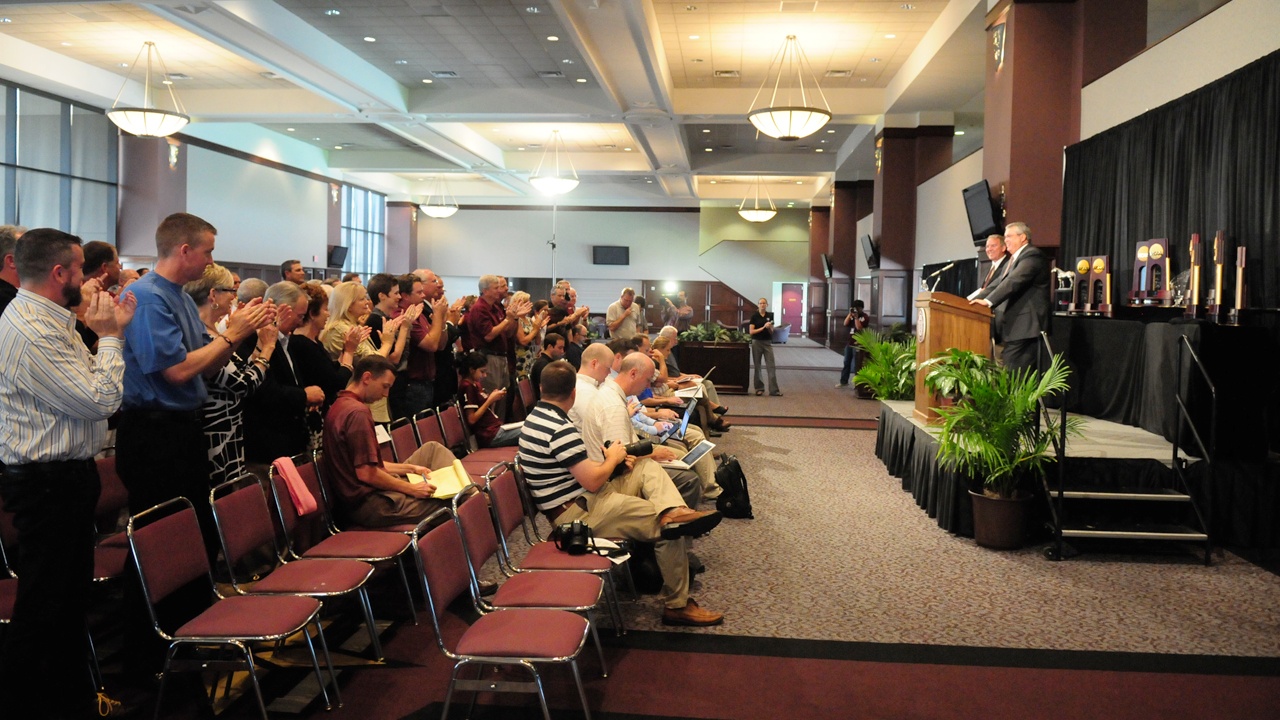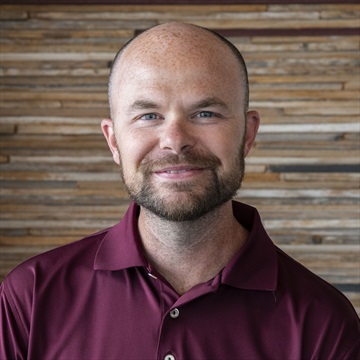
Gary Blair
Rob Childress
G Guerrieri
JT Higgins
Steve Denton
A&M coaches sound off in support of Byrne
Comments from A&M Coaches
Gary Blair:* Whether you’re Joe Paterno at Penn State or Jim Boeheim at Syracuse, there will always be problems, but you should be allowed to finish what you started. What Bill Byrne has started has never been done by any other athletic director at Texas A&M, and perhaps the whole Big 12. He’s not afraid to take shots from the media or fans, and the coaches he has hired, and even the ones he’s had to let go, would take a bullet for him.
* Byrne has been beaten down by the media, possible the board of directors and others in charge, but it is what it is, you can’t agree with everybody. Who knew who Billy Gillispie, Gary Blair or Mark Turgeon was before they were hired at A&M? You knew who Pat Henry was, which was an absolute steal of a coach. Byrne has given the coaches the tools to do what is needed to win. A&M is selling almost out every venue they play in and are hosting more Big 12 and national championships than any other school in the conference. If something is being done well, why not keep the chief in his place?
* If John Thornton is the man to take over, he will be a great soldier until someone is hired. Whoever ends up getting the job better not be from the good ol’ boy system, and better be someone like Bill Byrne, if A&M wants to maintain its success. That person doesn’t necessarily have to have ties to the SEC and needs to be someone who understands the ever changing athletic world.
* If Bill Byrne wasn’t the athletic director, he probably wouldn’t have taken the job. Kim Mulkey turned down the A&M job five times, even up to a year before she took the Baylor job, because she knew the athletic program was not committed to women’s basketball. People across the country know when a program is committed, and it starts with your athletic director and president. There is no way he would have been at A&M back in the early 2000’s.
* What made Byrne so special was his individuality and not always going with what the party line wanted. Sometimes you have to spend money to make money, and now A&M is starting to make money. People are paying good prices to go to women’s basketball and to see the facilities A&M has in sports like baseball. Eventually A&M will have a state-of-the-art football stadium to go along with Olsen Field.
* The sense that A&M has always been a ‘loveable loser’ has changed and it’s evident in the heated rivalries that have been replenished against schools like Baylor, Texas Tech and Texas. Now, A&M will have rivalries with LSU and Arkansas, and he will have one specifically with Mississippi State. A&M will start over in a new conference and develop new rivalries as time progresses.
Rob Childress:
* When you start talking about on the field, in the classroom and with facilities, Byrne has done about as good of a job as anyone in the country. He will always be in debt to Byrne for the belief he had in him and for giving him the opportunity to come from Nebraska to run a storied baseball program. He will continue to do his best and a lot of the success he has had on the field is a reflection of Byrne because he didn’t want to let his athletic director down.
* The transition from the Big 12 to the SEC is going to be the biggest challenge for Byrne’s successor. Byrne is a hall of fame athletic director and it shows at the schools he has been at.
* Byrne is a winner and a competitor just like the coaches and players under him. He wants to win just as bad as they do, and rides the ups and downs of a season right along with them, too. He provides every head coach with the resources it takes to be as successful as possible, and if they aren’t there is no one to blame but the coach themselves.
* Byrne was a lot of fun to be around and one of his best traits as an athletic director was his familiarity with everyone. He knew everything about all of the coaches and players, and that is a great quality to have as an athletic director.
* It’s not important for the next athletic director to have ties to the SEC. They need to understand what they are getting into, but SEC experience does not need to be a prerequisite to be the next athletic director at A&M.
* The college sports landscape changes every day and is driven by the dollar. An athletic director’s role is no longer about managing sports, but about managing a corporation. One of the reasons the move to the SEC was made was for financial reasons, and whoever ends up with the job needs to be able to see where A&M will be as an athletic department five and ten years down the road.
* The improvements to Olsen Field were huge and Byrne was the engine behind getting the renovations completed. Byrne was the guy who drove the car, and he is very fortunate to have coached under him.
* One book Byrne recommended him to read was called “Good to Great”, which is about getting the right people on the bus and the wrong people off the bus. Byrne had a great gift for figuring out who needed to be where and definitely left A&M athletics better off than when he got here.
G Guerrieri:
* Byrne always talked about changing the culture at Texas A&M, and he did just that. It’s one thing to say you want to do things, but it’s another to actually do them. One of the early things he did was get the wrong people off the bus, and the right people on board, and that is evident through his coaching hires. The people that were at A&M before Blair quickly learned that they would need to do better than they had in the past if they wanted to stay on campus.
* Byrne gave the coaches support to make their student-athletes better. They were able to bring in sport psychologists to help with confidence issues and Byrne also allowed him to bring in the best coaching staff in the country. He gave the soccer program the ability to go out and raise money to turn what was just a soccer field out on a prairie into one of the premier game day atmospheres in women’s soccer.
* A lot of people talk the talk, but he also walked the walk and made sure that all of his employees also walked the walk. There are different priorities on certain things that you see, and sometimes people only see what is in Kyle Field, Reed Arena or Blue Bell Park, but Byrne was there every day to make sure the coaches followed through on everything they said.
JT Higgins:
* Byrne came to A&M and raised the bar. When he came in, he told the coaches that they had to win, and some coaches embraced that while others thought it was too much to ask. The ones that embraced it got to stick around, while the ones that didn’t were replaced with ones that wanted to win. After that, he asked the coaches what was needed to be successful, and then gave them whatever they needed.
* When Byrne first got to A&M, he thought of him as a visionary. He had worked with other great athletic directors, but Byrne had a plan for where A&M was going facilities wise and competing on a national level.
* Things didn’t take long at all to change once Byrne was here, and the trying to win versus expecting to win attitude was the main point of emphasis.
* Finding a replacement for someone of Byrne’s tenure will be difficult, but he knows how awesome A&M is, which will make it easier to find a great athletic director to take his place. Byrne has laid a great foundation and the new guy won’t have trouble with being successful.
* In the spring before the golf team won the national championship, Byrne told him that he didn’t want the team going to Hawaii anymore because of budget cuts. He then cut his budget in every area except recruiting and scheduling and gave Byrne a laundry list of reasons the team needed to go to Hawaii. The next day, Byrne told him that they would be able to go to Hawaii, but he needed to start winning some conference championships. Even though they didn’t win the conference that year, the team brought the national championship back to Aggieland.
* He hears that people think Byrne cared about golf just as much as football or basketball and isn’t sure how Byrne gets that wrap because he believes Byrne thinks the revenue sports are more important. Byrne would much rather win at those sports than anything else, but if A&M is fielding a team in whatever sport, he wanted them to be good at it. There are definitely athletic directors out there that don’t put money behind their non-revenue sports, but Byrne was not one of those.
* Byrne knows all of the athletes and really makes an effort to do so. He’s involved in what the players and coaches are doing, and likes to know how things are going athletically and academically for each specific player.
* Byrne’s successor needs to realize that football has to win because that is what people want to see. Every coach on campus wants the football team to be great because it helps everyone. When you’re winning and on TV every week, it makes the jobs of the coaches of the lesser sports a lot easier. It’s easier to get recruits and sell their parents, which puts a lot of pressure on football coaches, but that’s the nature of the beast.
Steve Denton:
* Byrne let the coaches coach, and wasn’t seen a whole lot, which was good. He allowed the coaches to do their job and trusted them to do the best job they could do. He is very grateful for the opportunity that Byrne gave him to come to College Station and coach at A&M.
* All of the coaches are pretty self-driven and competitive, which makes them be harder on themselves when times are rough. If things go bad, most competitive coaches find themselves questioning their decisions throughout the year, but that also allows coaches to learn from their mistakes.
* Byrne clearly cared more about the ‘Olympic sports’ than the average athletic director. When he came to A&M, he was excited about the fact that Byrne was so interested in his sport and that he would be given all the tools to succeed.
* He knew from the hiring process the Byrne was the type of person that was going to give you everything you needed to be successful and then get out of your way and let you coach. He will be sorely missed because he was truly what you would call a ‘coaches’ athletic director’ and let the coaches do their jobs.
* Knowing that your athletic director is confident in a coach gives the coach the freedom to do the best they can, which is all you can hope for. Byrne did a great job of giving him the tools to be successful, and between that and Byrne’s confidence in him, provided a great working environment for everyone involved with the program.
* Even though Byrne had to be a lot of different places, he took the time to get to know each athlete individually which shows that he truly cares. A great leader knows everyone from the bottom to the top, and he exhibited that throughout his career at A&M.
Never miss the latest news from TexAgs!
Join our free email list


